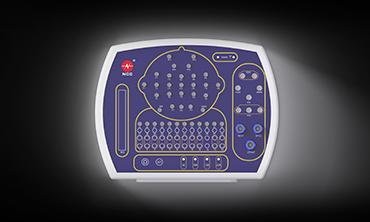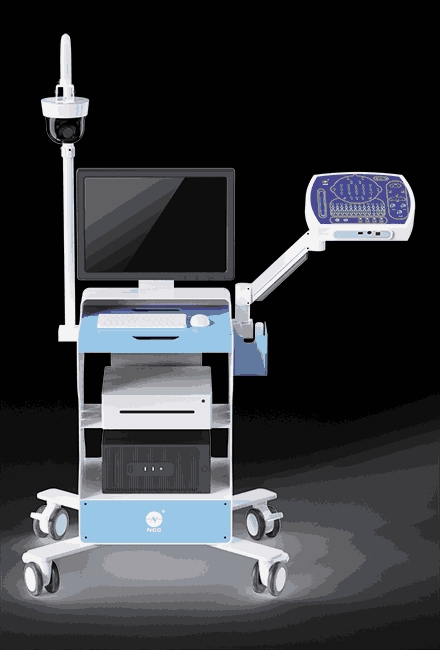Ease of Use and Patient Comfort: Key Features of Modern Digital EEG Devices
Electroencephalography (EEG) has long been a crucial diagnostic tool in neurology, providing valuable insights into brain function and helping clinicians identify various neurological disorders. However, traditional EEG systems have often been cumbersome, time-consuming to set up, and uncomfortable for patients. The emergence of modern digital EEG devices has revolutionized the field, prioritizing ease of use and patient comfort while maintaining the high-quality data necessary for accurate diagnoses. This article explores how the latest advancements in NCC’s digital EEG technology are transforming the patient experience and streamlining the workflow for healthcare professionals.

Wireless Connectivity and Portability
One of the most significant improvements in digital EEG devices is the incorporation of wireless technology and portability. Gone are the days of tangled wires and bulky equipment that restricted patient movement. Modern EEG systems utilize Bluetooth or Wi-Fi connectivity, allowing patients to move freely during the recording process without compromising data quality[1]. This enhanced mobility not only improves patient comfort but also enables healthcare professionals to conduct EEG tests in various settings, such as hospital rooms, outpatient clinics, and even at the patient's home.
Dry Electrodes and Reduced Preparation Time
Traditional EEG systems often require extensive preparation, including measuring the patient's head, scraping the scalp to reduce impedance, and applying conductive gel or paste to the electrodes. This process can be time-consuming, uncomfortable for the patient, and may require the expertise of a trained EEG technician. Modern digital EEG devices, however, have revolutionized the electrode technology by introducing dry electrodes that do not require skin preparation or conductive gels. These dry electrodes are designed to be comfortable, easy to apply, and can be set up by any medical staff member with minimal training. The reduced preparation time not only enhances patient comfort but also streamlines the workflow, allowing healthcare professionals to conduct EEG tests more efficiently.
User-Friendly Interface and Intuitive Software
Ease of use is a critical factor in the adoption of digital EEG devices, particularly for healthcare professionals who may not have extensive experience with EEG technology. Modern EEG systems feature user-friendly interfaces and intuitive software that simplify the recording process. With clear instructions, step-by-step guidance, and automated setup procedures, even novice users can confidently operate the equipment and obtain high-quality data. This user-friendliness reduces the learning curve and allows a broader range of medical professionals to perform EEG tests, potentially reducing the need for specialized EEG technicians and improving patient access to this important diagnostic tool.
Patient-Centered Design and Comfort
Patient comfort is a top priority in modern digital EEG devices. Manufacturers have designed these systems with the patient in mind, prioritizing comfort and minimizing any potential discomfort or anxiety associated with the EEG procedure. The use of dry electrodes and wireless connectivity contributes significantly to patient comfort, as patients no longer have to endure the application of conductive gels or restrictive wires. Additionally, many digital EEG devices feature low-profile designs that are less visible and intrusive, helping to alleviate the social stigma and negative impact that traditional EEG systems can have on patients.
Improved Diagnostic Yield and Patient Compliance
The combination of ease of use and patient comfort in modern digital EEG devices has led to improved diagnostic yield and patient compliance. By reducing the time and discomfort associated with EEG testing, healthcare professionals can obtain longer recordings, which are often necessary for diagnosing conditions such as epilepsy. Moreover, the improved patient experience encourages compliance, as patients are more likely to adhere to recommended testing protocols and follow-up appointments. This enhanced compliance ultimately leads to more accurate diagnoses, better treatment outcomes, and improved overall patient care.
Conclusion
The advancements in digital EEG technology have transformed the patient experience and streamlined the workflow for healthcare professionals. By prioritizing ease of use and patient comfort through features such as wireless connectivity, dry electrodes, user-friendly interfaces, and patient-centered designs, modern EEG devices have made this important diagnostic tool more accessible and comfortable for patients while maintaining the high-quality data necessary for accurate diagnoses. As digital EEG technology continues to evolve, we can expect to see even more innovative solutions that further enhance the patient experience and improve overall healthcare outcomes in the field of neurology.

 中文
中文 Arabic
Arabic Spanish
Spanish Hindi
Hindi French
French Indonesian
Indonesian Portuguese
Portuguese Persian
Persian Russian
Russian Korean
Korean German
German Vietnamese
Vietnamese Turkish
Turkish


